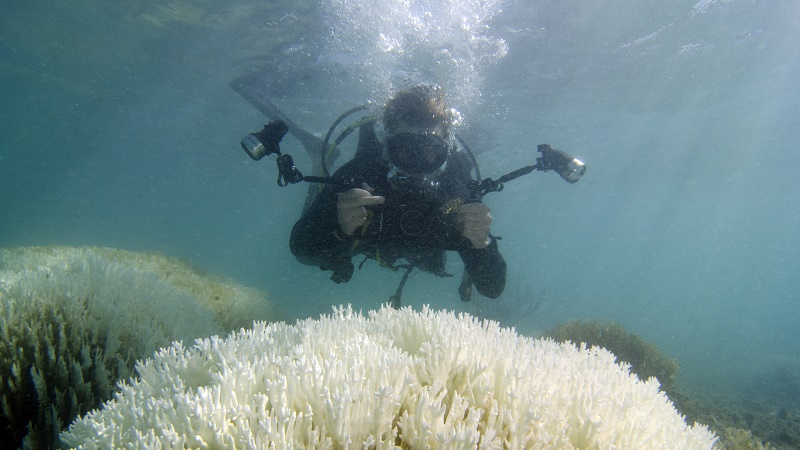Coral reefs are set to be one of the first casualties of climate change. Even if global warming is held to 1.5C – the toughest goal in the Paris Agreement – an estimated 90% of the world’s coral reefs will be degraded by 2050.
With the Ocean Summit in Mexico 7-9 March, and with 2018 dubbed the International Year of the Reef, the world’s coral reefs are getting extra attention. Yet E3G research has found that virtually no climate finance is going towards saving coral reefs, on which half a billion people rely on for food and coastal protection.
Coral reefs are vitally important for the planet, being home to a quarter of all fish species, and with an economic value of around $9.9 trillion globally. Coral reefs also support iconic species such as dolphins and sharks.
It is also known the oceans are responsible for producing most of the oxygen we breathe. The damage we are doing to the world’s ocean ecosystems could be life-threatening for humans.
The world’s richest countries have promised to distribute $100 billion of climate finance to developing countries by 2020. However, our analysis has found that virtually none of this finance is currently going to save coral reefs.
Less than 0.01% of climate finance from development banks 2010-15 went on coral reefs
We analysed the OECD database of almost 3,000 climate finance projects from 2010 to 2015, covering the ‘big six’ development banks. Only 3 of these projects mentioned coral reefs in the project description. These projects totalled a value of $4.5 million, out of a total of around $67 billion in climate finance by development banks – or less than a hundredth of one percent.
One of these projects was the Coral Reef Restoration Program implemented by the Inter-American Development Bank in Belize and Jamaica. The other two projects were part of the Coral Triangle Initiative.
Development banks have not yet set up programmes to specifically target coral reefs in Pacific countries, even though Pacific islands are particularly dependent on fish for food and livelihoods. Multilateral climate funds, including the Global Environment Facility, fared better with five reef-related projects (totalling $42 million).
The coral triangle initiative has now received additional funding, and there may be other projects benefitting coral reefs which did not show up in this database. Still, given the magnitude of the problem, the level of finance is pitiful.
What can be done?
Even without climate change, coral reefs are threatened by over-fishing, pollution from agriculture, plastic pollution, and chemicals in sunscreen. The warming ocean and rising acidity threaten to push many coral reefs over the edge.
However, the situation is not completely hopeless. Coral expert Dr Austin Bowden-Kerby has noted that “some corals have adapted over thousands of years to live and be healthy in extremely hot waters”. Through an active adaptation strategy of protecting reefs with marine zones, reducing pollution, and restoring the reef, coral reefs might have a chance.
In Fiji, coral gardening – a strategy of identifying and planting adapted corals – is being done without any government support by hotels and resorts, who have noticed regenerating the reef brings in tourists. On it’s own this isn’t enough, but it does offer hope for reef restoration.
Funding towards coral reefs seems to be a major gap in the climate finance landscape. Funding may also be needed for ‘coral vaults’ to act as gene banks for species faced with extinction. Around 50% of reefs may have been lost already.
Since many coral reefs are found in developing countries and small islands, these countries could benefit from international funding to set up marine protected areas, and coral restoration programmes linking to research institutes.
Coral reefs as green infrastructure
One problem could be that green infrastructure is not sufficiently prioritised by climate funds. Most focus on hard infrastructure, like sea walls, rather than coral reefs which act as natural barriers to protect the coast from cyclones.
Green infrastructure which can protect the coastline also includes mangrove forests. Mangroves are some of the world’s most important carbon sinks and also help trap sediment, protect against cyclones, and shelter small fishes.
Bowden-Kerby argues: “If the coral reefs go, then the sea grass, mangrove, and beach ecosystems go – as will entire atoll nations. This is the system where we must now make our stand.”
Moreover, the development banks need to better align their efforts with the Paris Agreement. Recent research by Oil Change International found that the development banks are providing more than three times the amount of annual finance to fossil fuel exploration than to climate finance for small island developing states.
Donors have pledged to scale up funding for climate resilience. How about starting with coral reefs?
Helena Wright is a senior policy adviser at E3G
